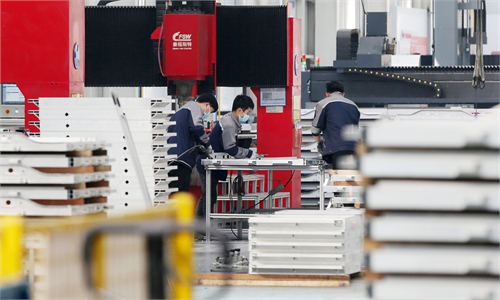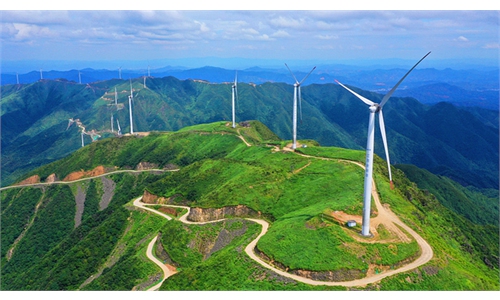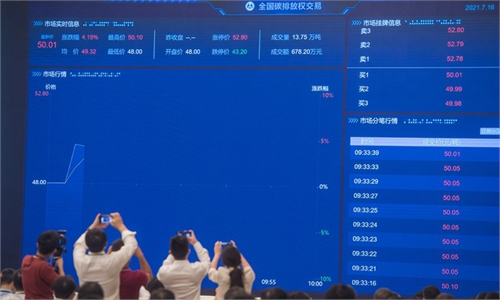
A child visits the Hangzhou Low Carbon Science and Technology Museum in Hangzhou, east China's Zhejiang Province, July 8, 2023. Students around the country enjoy a variety of activities during the summer vacation. (Photo by Zhou Fangling/Xinhua)
Chinese and foreign enterprises join hands to further tap green industrial chain, a continuous move to actively respond to climate change.
As of July this year, Schneider Electric has helped its global suppliers reduce carbon emissions by an average of 20 percent, and the carbon reduction results of Chinese suppliers are particularly impressive, with the average carbon reduction of 21 percent, slightly higher than the global average level, the company said in a note sent to the Global Times recently.
Since joining the "Zero Carbon Project" in 2021, "we have established a top-level plan and goals for sustainable development," said Sun Xingwen, chairman of Tianjin Jinrong Tianyu Precision Machinery Inc.
Sun said by the end of 2022, the company's carbon emission reduction per 100 million yuan in sales has dropped from 784.6 tons in 2019 to 610.4 tons, with an overall drop of 22.2 percent, and the company will reach a target of 50 percent reduction in 2025, comparing with 2019.
Schneider (Beijing) Medium and Low Voltage Co has installed a photovoltaic project in its factory, and the company has realized the optimization of the overall energy cost, with an annual power generation of 2.3 million kWh, which accounts for 34.9 percent of the annual energy supply of the factory.
In 2021, Schneider Electric launched the "Zero Carbon Project" for the suppliers, aiming to help the world's top 1,000 major suppliers reduce the carbon emissions generated by their operations by 50% in 2025, by providing technical guidance and consulting services. These companies include 230 core suppliers in China.
Gong Jianfeng, the global supply chain China procurement Vice President of Schneider Electric, said that it will provide customized empowerment for suppliers at different stages of reducing carbon dioxide emissions.
The company is aiming to assist 1,000 suppliers achieve the goal of reducing carbon emissions by 50 percent in 2025, and further formulate green strategies for sustainable development, he said.
China has established the world's largest carbon market for greenhouse gas emissions, and has significantly reduced the carbon emissions intensity, Vice Minister of Ecology and Environment Guo Fang said at a National Low-Carbon Day activity in July, according to the Xinhua News Agency.
The cumulative volume of carbon emissions allowances on China's carbon market was 237 million tons by June 30, with a turnover of more than 10.91 billion yuan ($1.52 billion).
Guo said the Ministry of Ecology and Environment will continue to implement a national strategy to respond actively to climate change, promote the construction of a national carbon market in a steady and orderly manner, and participate actively in global governance to address climate change.
China aims to achieve peak carbon dioxide emissions before 2030 and achieve carbon neutrality before 2060.
Global Times



